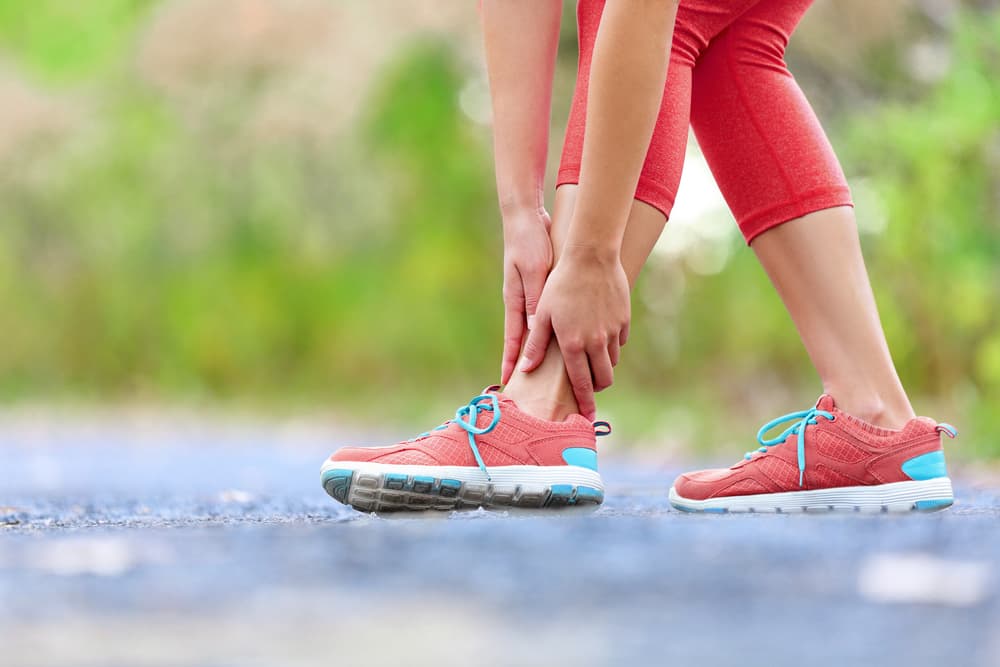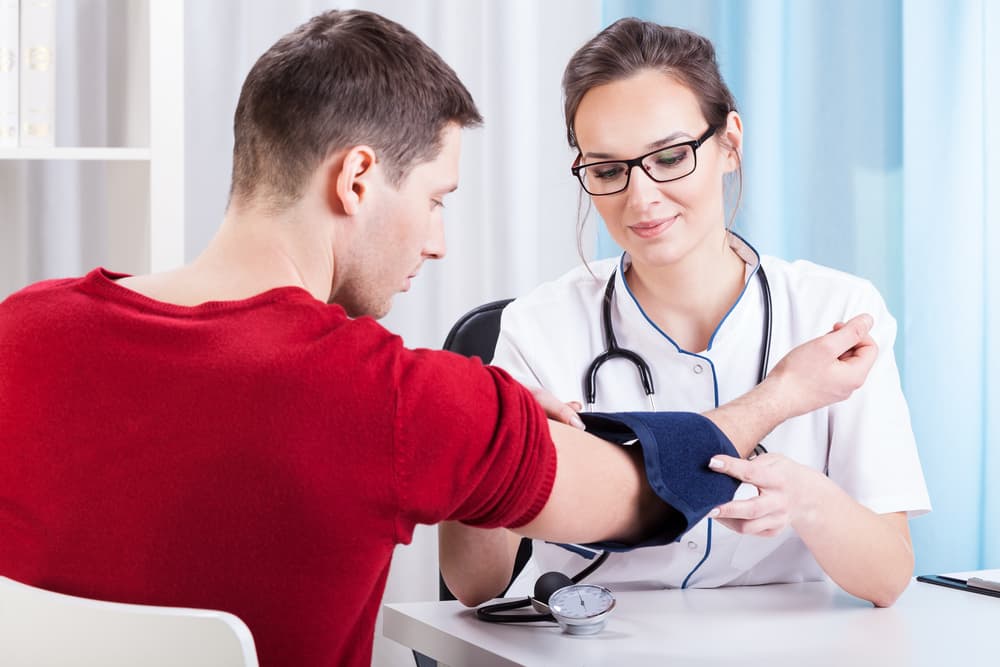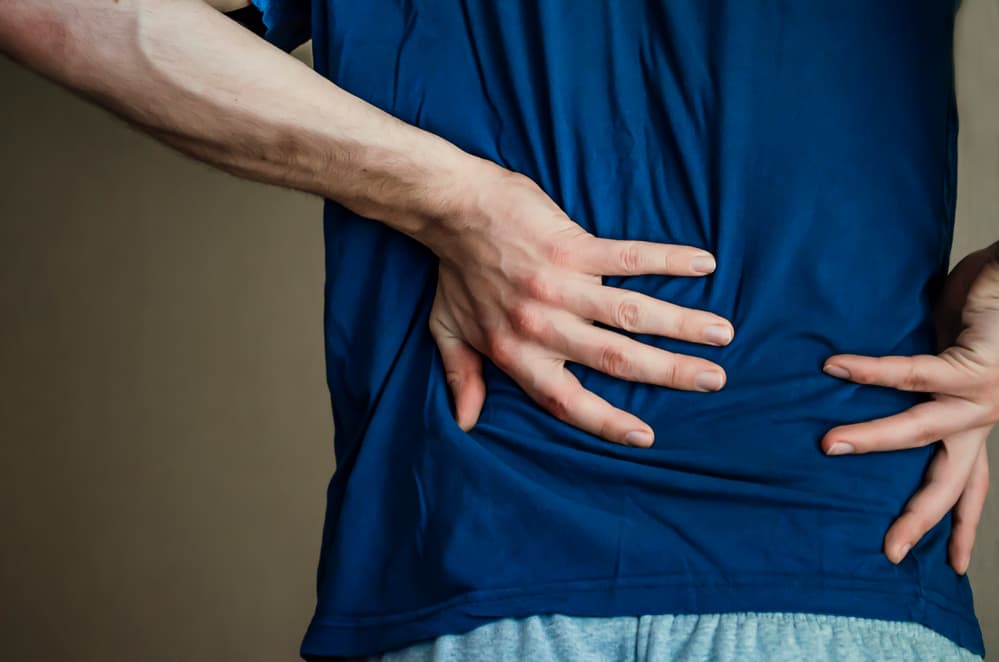Handheld massagers are convenient stress-relieving devices. Unfortunately, some users are too careless and would apply them on just about any sore spot. To avoid hurting yourself, you need to know where and when not to use a percussive massage gun.
For example, using a massager on body conditions like sprains, broken bones, and severe inflammations can do more harm than good. Also, it is not advisable to use this device on some body parts like your spine and kidneys.
Here are the other instances when you should refrain from using percussion massage guns for treatment.
Body Conditions Not for Percussive Massage Gun Use
Massage guns are excellent at providing pain relief. However, not all types of pain are the same.
Some can only get worse with a massager as it may stimulate the wrong nerves or put unnecessary pressure.
As relaxing as percussive therapy may be, it is not a cure-all.
So, before going into a massage therapy session, consult your doctor, especially if you have the following medical conditions.
Sprains
A sprain occurs when you overstretch or go beyond your normal range of motion. It’s a common issue on the ankle, knee, wrist and thumb.
A better description of a sprain is when you suddenly hear your joint pop after an excessive movement, and then discomfort follows.
Each time you experience a sprain, you tear some fibrous ligaments holding the bones of a joint (Mayo Clinic 2022).
And pressure from deep-tissue massages will only exacerbate the damage and pain.
So, do not use a percussive massage gun for this. Instead, rest the sprained area for about two days.
Treat swelling from mild sprains at home with ice packs and compression. But severe ones may require surgery.
No matter the sprain severity, give your body enough time to recover and avoid intense activities for about six weeks.
And to reduce the risk of sprains, move around more to make your joints more flexible.
Also, don’t forget to warm up and cool down when exercising.

Pulled Abdominal Muscle
Overuse or making sudden motions with your lower back muscle can stretch and tear some parts of your abdominal wall.
In turn, you feel pain around your stomach area each time you try to bend forward.
Specifically, this muscle strain affects your rectus abdominis (front of your belly) and the obliques (sides).
Again, do not use a percussive massage gun here to lessen the pain.
The constant hammering motion can damage the muscles further and heighten discomfort.
The best response is to avoid any exercise or sports activity until the pain subsides.
Apply an ice pack on the injured area for about two days.
Then do some gentle stretching when you feel better.
To avoid reinjury, be cautious of your body form during exercise, especially when lifting weights.
Also, avoid doing explosive exercises without proper body preparation.
Severe Inflammatory Issues
A handheld massager is excellent for stretching tight muscles and boosting blood flow to reduce muscle soreness, especially after exercise.
However, do not use a percussive massage gun on an existing inflammatory condition, like bursitis and tendinitis.
When inflammation happens, blood flow automatically increases in the inflamed area.
So, using a massage gun, in this case, is no longer helpful.
Rather than reduce the swelling and pain, the percussive impact may even aggravate your condition.
Seek a doctor’s help instead and take the proper medication.
Healing Bones
Using a massager on fractured bones is, of course, incorrect, not to mention painful.
And you should not use the device anywhere near newly mended bones, either.
Don’t be too complacent if you’re free from a cast or brace.
The rapid blows from a massage gun can only slow down your full recovery or cause reinjury.
Similarly, you might want to skip using percussion massage guns altogether if you have fragile bones.
Chronic Medical Conditions
People with pre-existing health conditions, particularly issues affecting the blood vessels, nerves and other internal organs, may not benefit from massage guns.
So, if you have hypertension, atherosclerosis, certain autoimmune disorders and other similar conditions, talk to your doctor first.
And if using a massage gun is causing unusual pain, stop your session immediately.
Have a health professional check you and get their advice before trying any form of massage.

Body Parts Not for Percussive Massage Gun Use
Not every body part or muscle can withstand the impact of a massager. Some are too weak for that hammering motion.
Also, remember that it is hard to mimic the soft massages of a therapist with a massage gun, considering that it is an electronic device.
So, before aiming your massager at every sore spot, check this list of body parts you should avoid.
First Rib
Use your right hand to reach the top of your left shoulder, close to your lower neck.
If you lightly tap this area with your fingers, you’ll feel a slight bulge, similar to a muscle knot. However, this is a bone, or your first rib, to be exact.
Others call it the upper traps. This spot is a common source of neck and shoulder aches, so people often think they can use the massager on it.
But do not use a percussive massage gun in this spot. If you do, you’ll likely feel a light tingle or pain in your arm.
It’s a signal for nerve compression that can lead to injury, which takes a long time to heal.
A massage by hand is better for this area. The massage therapist can feel the first rib and avoid pressing it too hard.
Biceps Tendon
The biceps are your upper-arm muscles, and the biceps tendon is the lower front section of this large muscle group.
If you try to feel this part with your hand, you’ll notice that it is softer than the other sections of your biceps.
And that’s the main reason why you should not use your percussive massage gun here. Pressure and vibration can potentially inflame or tear this weaker muscle.
Moreover, the biceps tendon links to a thin lower arm bone called the radius, which you might accidentally hit.
Instead of percussion therapy, putting a cold pack on a sore tendon can provide relief.
Doctors may also recommend anti-inflammatory medication or physical therapy, depending on severity.
Generally, be more mindful when doing any heavy lifting to avoid hurting this area.

Greater Trochanter
Your thighs often feel sore after an intense workout. And you can safely use a massage gun to loosen up your tight quads and glutes.
However, be careful during the therapy as you might hit something you shouldn’t.
If you shift your hips to one side and run your hands over it, you can feel a bony part protruding. This area of your thigh bone is the greater trochanter.
A fluid sac surrounds it called a bursa, which does not like friction.
The vibration from a massage gun can irritate this area, which can result in inflammation and pain in your hip, also known as trochanteric bursitis (Cleaveland Clinic 2018).
When you use the massage gun, make sure not to hit the side of your pelvis.
You can use ice packs instead to lessen the soreness. Doctors may also prescribe anti-inflammatory drugs or physical therapy.
To avoid hurting your greater trochanter, aim to maintain a healthy weight.
Also, avoid doing repetitive activities that target your hips.
But do incorporate flexibility and strengthening exercises for your hip muscles.
Spine
Take extra care when massaging your back area, as you might hit your spinal cord.
Aside from being a bony area, your spine also houses nerve roots and discs.
They cannot take direct vibration forces, so do not use a percussive massage gun here. And agitating them can only lead to severe injuries.
An ideal alternative is a vibrating foam roller. Its broader surface will not dig against your spine.
The foam rolling impact is also more controlled than the targeted hits of a massage gun.
You may need to see your doctor before trying this option, though.
Foam rolling may not be suitable for people with low bone density.
Kidneys
Aside from the spine, the kidneys are also not for percussive massage gun use. These are in your back area near your lowest rib.
What makes kidneys different from other organs is that they are close to the skin’s surface.
That means the vibrating force of a percussion massager can hit or scratch them.
It can cause unnecessary discomfort or disrupt normal kidney function.
Remember that organs are softer and more sensitive than muscles.
They are generally not used to external forces, so even the slightest impact on them can cause adverse effects.

Conclusion
Massage guns are beneficial to health. But improper use can also result in severe consequences. As reported in the Journal of the American Physical Therapy Association in 2020, a 25-year-old woman received improper treatment from a percussion massager that resulted in her developing rhabdomyolysis.
And so, if you have any pre-existing conditions, consult your doctor first and ask if percussion therapy is good for you.
Keep sensitive body parts, bones and organs in mind during your session, and avoid hitting them with your device.
Finally, choose your device well. Check if its specs and features match your aim for a safe and satisfying massage.
To save you time, I have tested multiple devices and you can find the best massagers for muscle recovery here.
Related Questions
1. Can you use a massage gun during pregnancy?
No studies have confirmed if massage guns are safe for pregnant women yet. But regular massages during pregnancy are generally safe as long as the mum-to-be is free from pre-existing health conditions. Avoid getting a pregnancy massage if you have pre-eclampsia, deep vein thrombosis, placenta issues and gestational diabetes.
2. Can you use a massage gun for carpal tunnel syndrome?
Experts concluded that massages alleviate CTS symptoms through inflammation reduction and flexibility restoration (Barbara Alcaraz, M.A., B.A., L.M.T. 2018). However, further studies are necessary to determine whether handheld massagers can provide the same or better results. These devices are not a quick solution or cure for CTS, either. Still, there’s no harm in doing massager sessions for CTS, provided they are under the guidance of an orthopaedic upper limb specialist.
3. Is it OK to use a massage gun every day?
Generally, it is safe to use the massager daily. You can use it for up to 2 minutes per muscle group, about two to three times. Make sure to follow what the product manufacturer or your doctor recommends.
- What Are the Advantages and Disadvantages of Folding Treadmills? - 11 March 2025
- Can You Use a Massage Gun When Pregnant? - 10 March 2025
- What is the Best Pre-Run Food? - 6 March 2025
